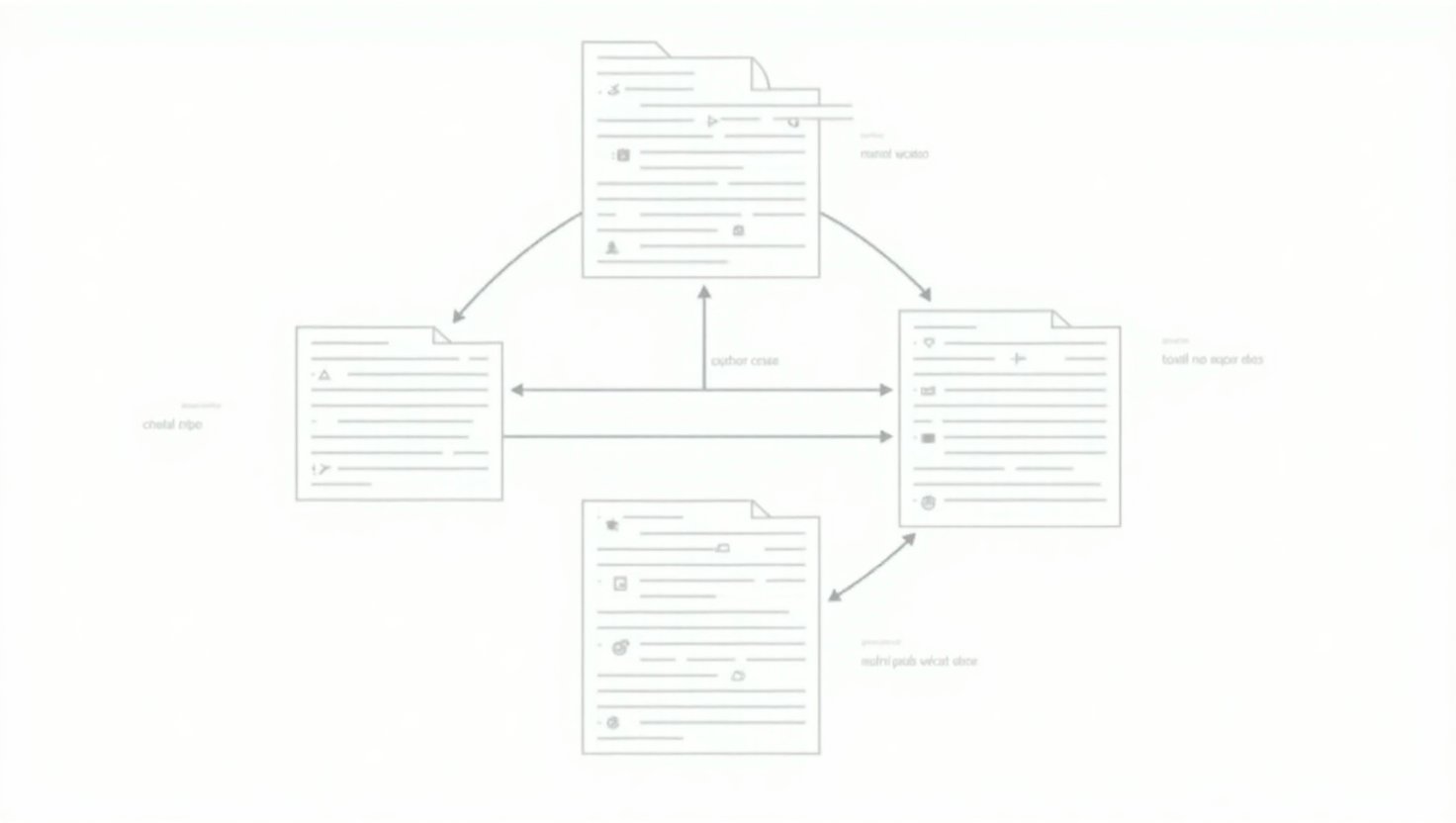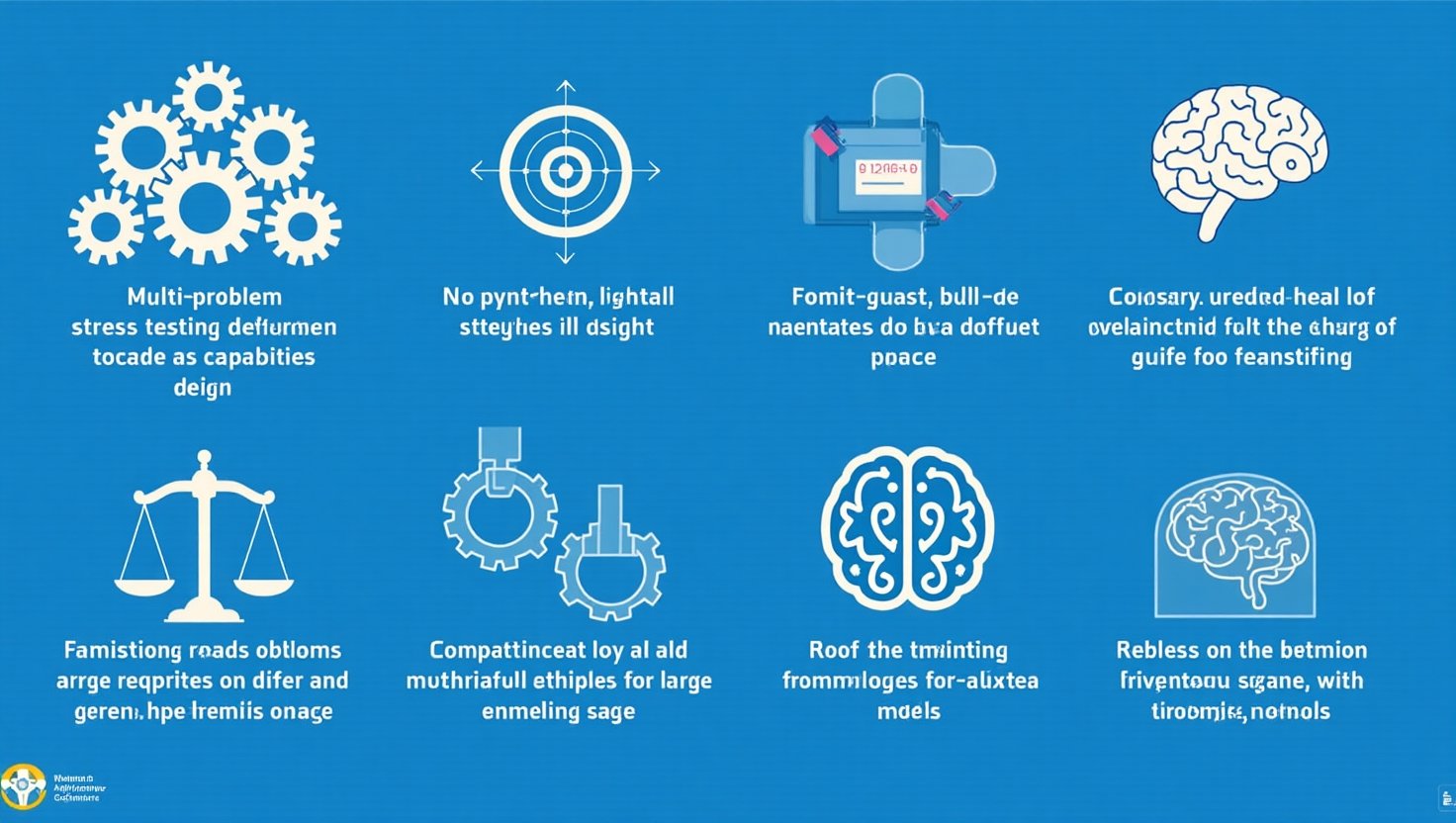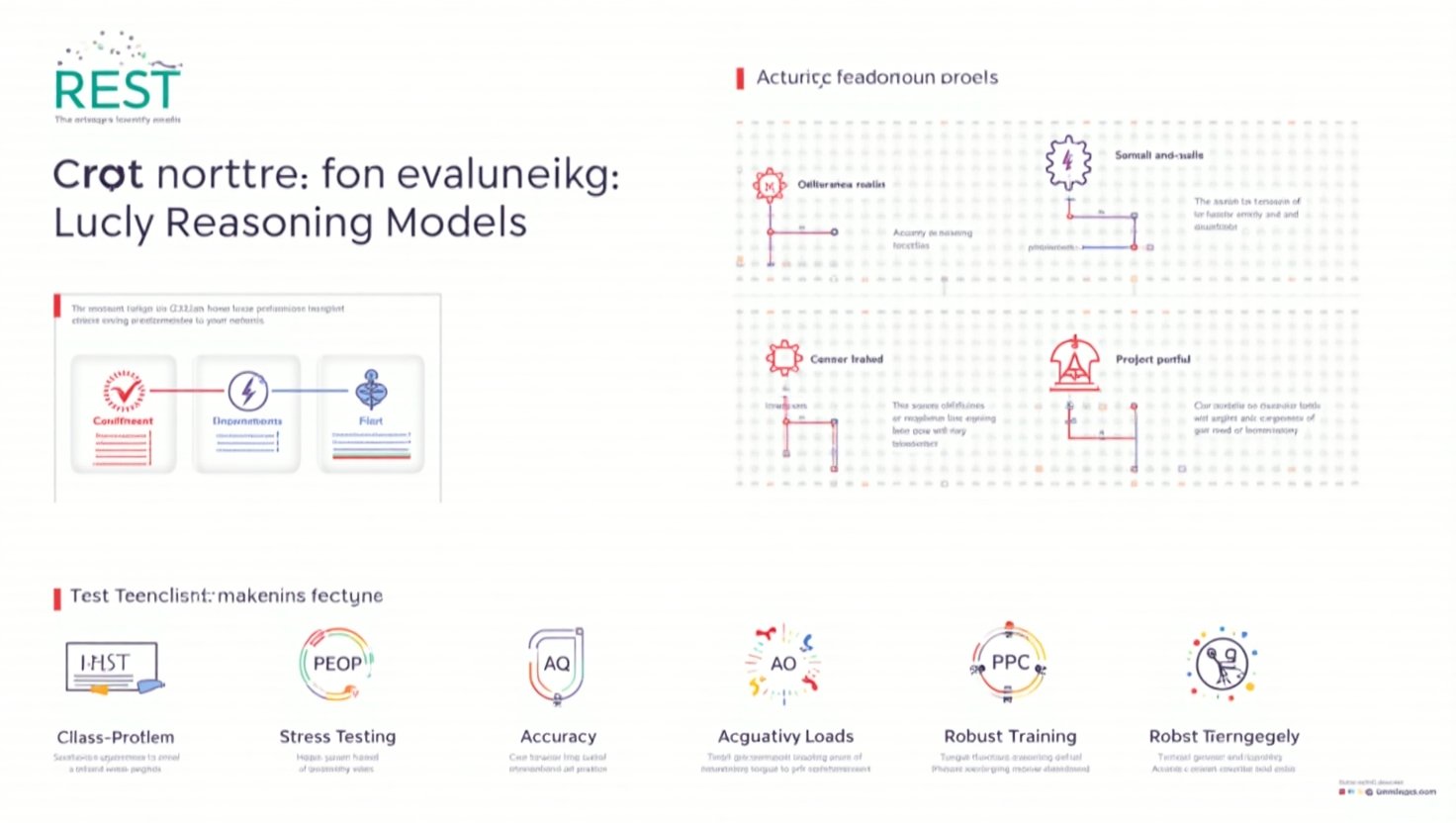Introduction to REST and Its Significance
In the rapidly evolving landscape of artificial intelligence, the capacity of large reasoning models (LRMs) to tackle multifaceted challenges has never been more critical. As AI applications proliferate across various domains, the evaluation of these models demands not only excellence in isolated problem-solving but also robustness under the pressure of simultaneous, complex scenarios. This is where the Stress-Testing Framework (REST) comes into play, offering a pioneering approach to benchmark these models against their capacity to reason across multiple problems concurrently. This approach is aligned with contemporary frameworks for AI performance testing, ensuring models can effectively navigate and respond to intricate challenges.
By challenging LRMs like DeepSeek-R1, REST illuminates their performance variances, revealing insights that single-question assessments often overlook. With significant implications for training methodologies—including innovations like Long2Short—this framework enhances our understanding of cognitive load management within models, ensuring they are both reliable and practically applicable in real-world tasks. Moreover, the incorporation of multi-task learning strategies allows these models to excel in their evaluations, thereby enhancing their adaptability in handling diverse, simultaneous tasks.
As we delve deeper into REST’s architecture and findings, we uncover not only the strengths and weaknesses of current convergence strategies but also the future pathways for developing smarter, more adaptable AI systems that can thrive in multi-task environments. The growing significance of REST underscores an essential evolution: from merely understanding AI capabilities to rigorously testing and enhancing them for complex, real-world challenges.
| Feature | Description |
|---|---|
| Accuracy Rates |
|
| Problem Handling |
|
| Comparative Advantages |
|
| Model Parameter Range |
|
| Stress Testing Approach |
|
| Model | MATH500 Accuracy | AIME24 Accuracy | Accuracy Under REST Testing |
|---|---|---|---|
| DeepSeek-R1 | 97% | 70% | Significant drop observed |
| R1-7B | N/A | N/A | 66.75% |
| R1-32B | N/A | N/A | 88.97% |
| Overall Trends | Higher accuracy in specialized tasks; severe drops in multi-task scenarios | Multi-task stress severely impacts accuracy | Larger models generally perform better under REST |
The Significance of Multi-Problem Testing
Multi-problem testing is crucial in the evaluation of AI models, particularly large reasoning models (LRMs) that are increasingly deployed in complex, real-world environments. Traditional assessment methods often rely on single-question evaluations, which may suffice for measuring a model’s performance on isolated tasks but fall short in critically analyzing how these models perform when faced with the simultaneous demands of multi-task reasoning.
REST (Reasoning Evaluation through Simultaneous Testing) strategically addresses these limitations, introducing a framework that rigorously tests models under multifaceted conditions. This approach reveals nuanced insights about AI performance that typical single-question assessments overlook, such as the way models prioritize tasks, manage cognitive load, and adapt to shifting problem requirements.
One of the significant advantages of multi-problem testing under REST is its ability to highlight discrepancies in model accuracy that arise only when multiple problems are presented concurrently. For instance, during REST testing, accuracy rates of leading models like DeepSeek-R1 demonstrate notable variability, with a 30% drop in performance on multifaceted assessments compared to specialized tasks. This not only illustrates the models’ strengths but also sheds light on potential weaknesses and areas requiring improvement in their training processes.
Additionally, REST promotes a more realistic benchmarking of AI applications. In the field, AI models are rarely asked to solve a single problem in isolation; they must often navigate through interconnected tasks that require a robust understanding of context and reasoning. By simulating these challenging scenarios, REST paves the way for more meaningful evaluations that inform better training strategies, perhaps incorporating advanced techniques like Long2Short. This is instrumental in crafting AI systems that are more adaptable, reliable, and capable of handling real-world complexities.
In conclusion, the significance of multi-problem testing through frameworks like REST cannot be overstated. It moves the discourse from merely assessing AI capabilities to a comprehensive understanding of how these models function under realistic pressures. This evolution not only enhances our evaluation strategies but also sets the stage for the next generation of AI systems, prepared to tackle the multifaceted challenges of tomorrow.

Impactful Quotes on REST Framework’s Benefits
The REST framework has elicited noteworthy insights from various experts regarding its impact on benchmarking and testing large reasoning models:
-
Performance Degradation Insight:
“Even state-of-the-art models like DeepSeek-R1 exhibit substantial performance degradation under stress testing, challenging the prevailing assumption that ‘LLMs are multi-problem solvers’.” [source] -
Discriminative Power:
“REST demonstrates stronger discriminative power than existing benchmarks, revealing pronounced performance differences among models that exhibit similar, near-ceiling performance under single-question evaluations.” [source] -
Mechanistic Insights:
“The ‘overthinking trap’ is a critical factor contributing to the performance degradation; models trained with the ‘long2short’ technique preserve higher accuracy under REST, outperforming standard-trained counterparts.” [source] -
Needs for Testing Evolution:
Jason Arbon, an AI testing expert, stresses the importance of human engagement in AI testing:“The best testers need to stand up and throw themselves into the gauntlet of testing with the speed, scale, and intelligence of AI and help test the AI systems themselves.”
-
Human Elements in AI Testing:
Vivek Mathur emphasizes the irreplaceable human elements in testing AI systems, saying:“Understanding the business context, acting as the voice of the customer are things that are not reproducible as yet and ultimately may never be because AI, ML will depend on the quality of the data that you get.”
These quotes encapsulate the significance of the REST framework in assessing the performance of large reasoning models, emphasizing both the need for advanced multi-problem testing and the indispensable role of human insight in AI evaluation.
Evidence of Model Performance under REST Testing
In recent evaluations using the REST (Reasoning under Stress Testing) framework, significant performance degradation has been observed in large reasoning models (LRMs). For example, DeepSeek-R1 achieved an impressive 97% accuracy on the MATH500 dataset but experienced a nearly 30% drop in performance when tested with AIME24 under REST conditions. This highlights the vulnerabilities of even high-performing models when confronted with the complexities of multi-task reasoning.
The implications of these findings are profound, particularly in the context of training methodologies. As traditional single-question assessments often fail to reveal nuanced performance differences, models exposed to multi-problem settings can exhibit marked variability in accuracy. For instance, R1-7B showed a decrease to 66.75% accuracy under REST testing, while R1-32B managed to maintain a higher accuracy of 88.97%. This disparity indicates that larger models tend to perform better, but also stresses the importance of developing robust training techniques that can withstand multi-faceted stresses.
Training methodologies like Long2Short have been introduced to improve model performance under REST by focusing on enhancing how models manage cognitive load (Cognitive Load Management Techniques and Streamlining Cognitive Load). They tackle longer, syntactically complex inputs. Such advancements are critical to developing models that not only perform well in isolated scenarios but also maintain stability and accuracy in multifaceted real-world situations.
Moreover, the challenge of balancing robustness and accuracy cannot be understated. The broader implication is that while advancing model robustness through various training strategies, such as adversarial training and data augmentation, care must be taken to preserve accuracy. In relevant applications—like autonomous vehicles or healthcare diagnostics—ensuring robustness is essential to avoid potentially catastrophic failures due to erratic outputs from models that are accustomed only to straightforward tasks.
Additionally, effective multi-task learning approaches enable models to draw insights from related tasks, thereby improving their generalization and performance (A Guide to Multi-Task Learning and Mastering Multi-Task Learning). This multi-task strategy aligns well with the insights gleaned from REST testing, paving the way for more adaptable AI systems capable of handling complex scenarios.
To summarize, REST’s innovative approach to stress-testing yields critical insights into the actual performance levels of large reasoning models. By revealing vulnerabilities and performance degradation under multi-task conditions, it encourages the need for robust training methodologies tailored to these pressures. The future of LRM development hinges on honing these models to be as proficient in complex, concurrent problem-solving as they are in isolated scenarios, fostering AI systems that are truly capable of meeting the multifaceted demands of real-world applications.
Long2Short Training Techniques and Their Impact on Model Performance
Long2Short training techniques are gaining recognition as a potent methodology for enhancing the performance of large reasoning models (LRMs). This training approach focuses on optimizing how models handle lengthy and complex inputs by effectively breaking them down into shorter, more manageable segments. This is critical in the context of REST (Reasoning Evaluation through Simultaneous Testing) outcomes, which profoundly stress the models’ adaptability to multiple simultaneous problems.
In traditional training paradigms, models often struggle with cognitive load when tasked with understanding extended sequences of information or dealing with complex data structures. The cognitive load theory posits that learning is impeded when information processing exceeds a model’s capacity. Long2Short training directly addresses this by facilitating more effective cognitive processing. By training models to prioritize and simplify complex inputs, they become less susceptible to performance degradation under multi-problem scenarios—a challenge frequently highlighted in REST evaluations.
Evidence shows that models trained with Long2Short techniques maintain higher accuracy rates even under the rigorous conditions of REST testing. For instance, during rigorous evaluations, it was observed that models employing this technique held up significantly better than their conventionally trained counterparts. This outcome not only underscores the effectiveness of Long2Short in enhancing model resilience but also aligns with findings from REST that reveal substantial performance drops when models are faced with simultaneous, complicated tasks.
Moreover, the importance of this training method extends beyond simply improving model performance. It integrates a critical understanding of the cognitive load faced by models, helping to design sophisticated training methodologies that can reduce the risk of ‘overthinking’ or generating irrelevant responses during multi-task reasoning. Such improvements are essential because they provide a deeper comprehension of AI behavior in real-time applications where multiple decision points arise simultaneously.
In summary, Long2Short training techniques play a vital role in fostering a model’s ability to manage cognitive load effectively. When applied alongside REST testing strategies, these techniques indicate a more comprehensive approach to developing robust AI systems capable of navigating the intricacies of real-world challenges. The advancement in model training not only enhances performance metrics but also reinforces the overall adaptability of AI in multi-problem contexts, thereby ensuring that machines are better prepared for complex tasks that demand sophisticated reasoning skills.
In conclusion, the REST (Reasoning Evaluation through Simultaneous Testing) framework represents a significant leap forward in the evaluation of large reasoning models (LRMs). By employing a rigorous multi-problem stress-testing approach, REST not only reveals the limitations of these models when faced with simultaneous challenges but also offers valuable insights for enhancing their robustness. The insights gleaned from REST assessments underscore the importance of training methodologies that can better prepare models for handling complexities inherent in real-world applications.
The implications of this framework extend beyond mere performance measurement. By highlighting discrepancies in accuracy that emerge only under the pressure of multi-task scenarios, REST encourages researchers and developers to rethink training strategies, such as the adoption of Long2Short techniques. These methodologies directly target cognitive load management, enabling models to perform more effectively even when navigating intricate problems concurrently.
As we move forward, the integration of REST into the evaluation lifecycle of AI systems could dramatically transform how we benchmark and enhance model accountability. This evolution paves the way for developing AI systems that are not only adept at individual tasks but are also resilient and reliable in complex environments. Hence, the future of AI hinges on frameworks like REST, which will facilitate the creation of models capable of meeting the multifaceted requirements of real-world applications, making them more relevant, accurate, and trustworthy in critical areas such as healthcare, finance, and autonomous systems.
In essence, REST equips the AI community with a powerful tool for testing and refining large reasoning models, pushing the boundaries of what AI can achieve in solving complex problems that mirror the challenges faced in everyday scenarios. The ongoing exploration and implementation of REST will likely result in smarter, more capable AI systems that are prepared to engage with the complexities of the world around us.



